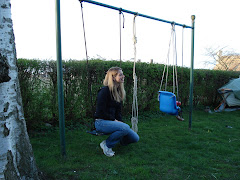The first time I read the Desiderata was in a dorm room in Dykstra Hall, my freshman year at UCLA. I was with my friends Joy and Casey, and found the framed poem on the painted brick wall next to Joy's bunkbed. We were giddy and high on life, having just eaten dinner followed by vanilla frozen yogurt on a sleepy Saturday evening. I asked Joy, "What is that story?" And she told me it was her favorite poem, as it gave all the wisdom she needed in life. Casey added that the poem meant so much to her, that the 3 of us should read it aloud together, in unison. Amused and laughing, we recited the whole poem together, the way kids might squeak aloud some Biblical gospel during church. I can't read that poem today without thinking of the wonderful Joy and Casey. They were my gorgeous Kappa sisters who helped me find my way and 'nurtured my strength' that first year, living on my own as a naïve 17-year-old. Though miles now separate us, they'll always have a special place in my heart. Joy now has two beautiful daughters, little Camryn and Charley, who will one day, read the Desiderata too.
DESIDERATA
Go placidly amid the noise and haste, and remember what peace there may be in silence. As far as possible without surrender, be on good terms with all persons. Speak your truth quietly and clearly; and listen to others, even the dull and the ignorant; they too have their story. Avoid loud and aggressive persons; they are vexatious to the spirit. If you compare yourself with others, you may become vain or bitter; for always there will be greater and lesser persons than yourself.
Enjoy your achievements as well as your plans. Keep interested in your own career, however humble; it is a real possession in the changing fortunes of time. Exercise caution in your business affairs; for the world is full of trickery. But let this not blind you to what virtue there is; many persons strive for high ideals; and everywhere life is full of heroism. Be yourself.
Especially, do not feign affection. Neither be cynical about love; for in the face of all aridity and disenchantment, it is as perennial as the grass. Take kindly the counsel of the years, gracefully surrendering the things of youth. Nurture strength of spirit to shield you in sudden misfortune.
But do not distress yourself with dark imaginings. Many fears are born of fatigue and loneliness. Beyond a wholesome discipline, be gentle with yourself. You are a child of the universe, no less than the trees and the stars; you have a right to be here. And whether or not it is clear to you, no doubt the universe is unfolding as it should. Therefore be at peace with God, whatever you conceive Him to be, and whatever your labors and aspirations, in the noisy confusion of life keep peace with your soul. With all its sham, drudgery, and broken dreams, it is still a beautiful world. Be cheerful. Strive to be happy.
- Max Ehrmann, 1927
The poem includes some challenging words, so if English isn't your first language, here's a guide:
Placidly: gently, calmly
Haste: speed
Vexatious: cause trouble
Feign: pretend something
Cynical: distrustful + pessimistic
Aridity: dryness, dullness
Perennial: lasting year-round, permanent
Fatigue: exhaustion, tiredness
Discipline: training/behavior
Sham: something fake
Drudgery: exhausting work





















